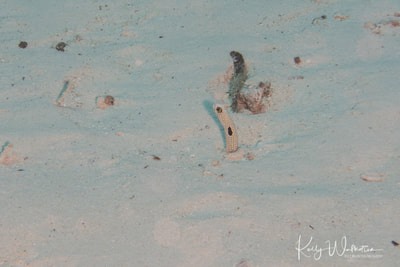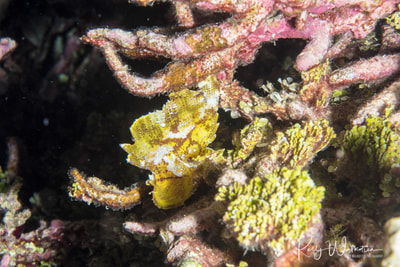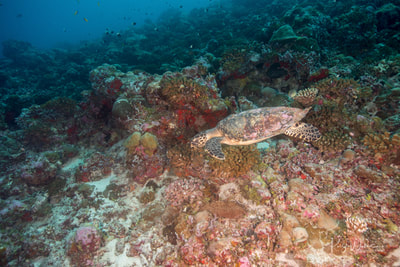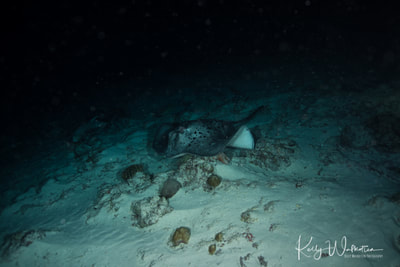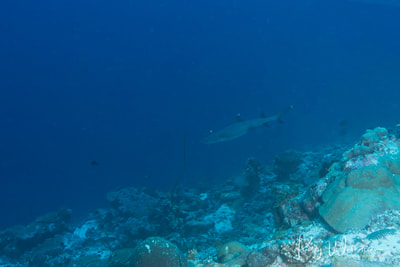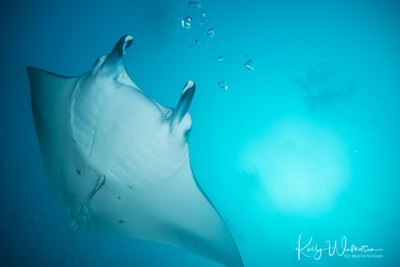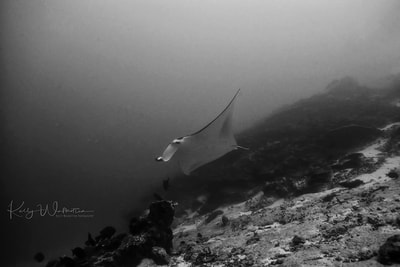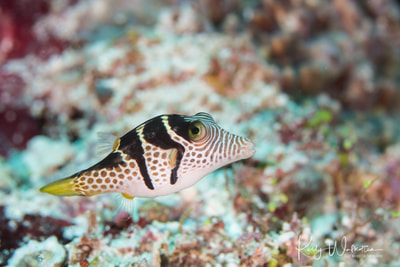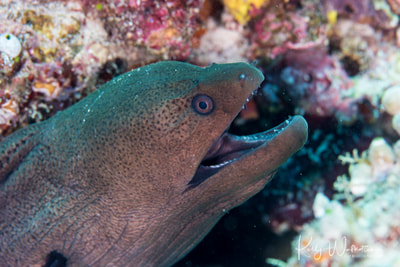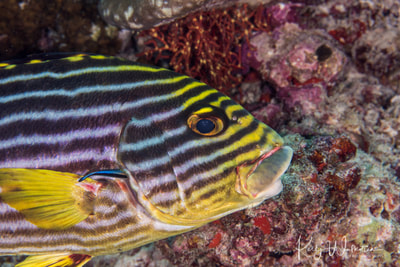Maldives: Where the Big Stuff Roams
The Maldives are located in the Indian Ocean and situated in the Arabian Sea. The islands lie southwest of Siri Lanka and India and consist of 26 atolls. The Maldives are one of the world’s most geographically dispersed countries, as well as the smallest Asian country by both land area and population. The average elevation is 4 ft 11 in above sea level making it the world’s lowest country. Its highest point is 7ft 10in. Fishing is its most dominant economic activity followed by the rapidly growing tourism industry.
On December 26, 2004, following the 2004 Indian Ocean earthquake, the Maldives were devastated by a tsunami. Only nine islands were reported to have escaped any flooding, while fifty-seven islands faced serious damage to critical infrastructure, fourteen islands had to be totally evacuated, and six islands were destroyed. Twenty-one resort islands were forced to close because of tsunami damage. The total damage was estimated at more than $400 million, or some 62% of the GDP. 102 Maldivians and 6 foreigners reportedly died in the tsunami. The destructive impact of the waves on the low-lying islands was mitigated by the fact there was no continental shelf or land mass upon which the waves could gain height. The tallest waves were reported to be 14 feet high.
The Maldives have a range of different habitats including deep sea, shallow coast, and reef ecosystems, fringing mangroves, wetlands and dry land. There are 187 species of coral forming the coral reefs. This area of the Indian Ocean, alone, houses 1100 species of fish, 5 species of sea turtle , 21 species of whale and dolphin, 400 species of mollusk, and 83 species of echinoderms. The area is also populated by a number of crustacean species: 120 copepod, 15 amphipod, as well as more than 145 crab and 48 shrimp species.
We chose a southern itinerary as we were focusing on sharks, manta rays, and whale sharks. This southern route is a bit more challenging as the currents can be very strong and most of our dives we at a 99 ft maximum. Because of the deep depths, we keep our diving to three dives a day. There were many dives where we spent lots of time in the blue ocean and only got shadowy glimpses of shark. Other times we had 200+ sharks on a dive.
The manta cleaning stations were very active and there were always mantas to be seen. The currents were not so strong at the manta cleaning stations so it was easier to photograph them.
Reef Manta Rays are found in warm temperate, subtropical and tropical waters. Reef Mantas tend to be resident and coastal. They are filter feeders and eat large quantities of zooplankton, which they swallow with their open mouths as they swim. Gestation lasts over a year and mantas give birth to live pups. Mantas may visit cleaning stations for the removal of parasites. Like whales, they breach, for unknown reasons.
Manta rays have broad heads, triangular pectoral fins, and horn-shaped cephalic fins located on either side of their mouths. They have horizontally flattened bodies with eyes on the sides of their heads behind the cephalic fins, and gill slits on their ventral surfaces. Their tails lack skeletal support and are shorter than their disc-like bodies. The dorsal fins are small and at the base of the tail. Reef Mantas reach about 18 feet in length. Their width is approximately 2.2 times the length of the body. Mantas are typically black or dark in color with pale markings on their "shoulders". Ventrally, they are usually white or pale with distinctive dark markings by which individual mantas can be recognized and identified. All-black color morphs are known to exist. The skin is covered in mucus which protects it from infection.
Manta rays have broad heads, triangular pectoral fins, and horn-shaped cephalic fins located on either side of their mouths. They have horizontally flattened bodies with eyes on the sides of their heads behind the cephalic fins, and gill slits on their ventral surfaces. Their tails lack skeletal support and are shorter than their disc-like bodies. The dorsal fins are small and at the base of the tail. Reef Mantas reach about 18 feet in length. Their width is approximately 2.2 times the length of the body. Mantas are typically black or dark in color with pale markings on their "shoulders". Ventrally, they are usually white or pale with distinctive dark markings by which individual mantas can be recognized and identified. All-black color morphs are known to exist. The skin is covered in mucus which protects it from infection.
Mantas move through the water by the wing-like movements of their pectoral fins, which drive water backwards. Their large mouths are rectangular, and face forward as opposed to other ray and skate species with downward-facing mouths. The spiracles (gills) typical of rays are vestigial, and mantas must swim continuously to keep oxygenated water passing over their gills. The fish's gill arches have pallets of pinkish-brown spongy tissue that collect food particles.] Mantas track down prey using visual and olfactory senses. They have one of the highest brain-to-body mass ratios and the largest brain size of all fish.
As filter feeders, manta rays consume large quantities of zooplankton in the form of shrimp, krill and planktonic crabs. An individual manta eats about 13% of its body weight each week. When foraging, it slowly swims around its prey, herding it into a tight "ball" and then speeds through the bunched organisms with a wide-open mouth. If a ball is particularly dense, a manta may somersault through it. While feeding, mantas flatten their cephalic fins to channel food into their mouths and the small particles are collected by the tissue between the gill arches. As many as fifty individual fish may gather at a single, plankton-rich feeding site. Mantas are themselves preyed upon by large sharks and by killer whales. They may also be bitten by sharks, and harbor parasitic copepods. Mantas visit cleaning stations on coral reefs for the removal of external parasites. The ray adopts a near-stationary position close to the coral surface for several minutes while the cleaner fish consume the attached organisms. Such visits most frequently occur when the tide is high.
Whale Sharks are well known around the Maldive islands and a coveted sight for divers.. Whale sharks are the largest fish on the planet. These gentle giants are filter-feeders and are harmless to humans. The enormous whale shark, which can reach lengths of 40 feet or more, weigh up to 47,000 pounds, and feeds on the tiniest of ocean organisms, plankton. Whale sharks have very large mouths and are filter feeders, which is a feeding mode that occurs in only two other sharks, the megamouth shark and the basking shark. They feed almost exclusively on plankton and are not known to pose a threat to humans. The name "whale shark" refers to the fish's size, being as large as some species of whales, and also to its being a filter feeder like baleen whales.
Whale sharks have a mouth that can be 1.5 m (4.9 ft) wide, containing 300 to 350 rows of tiny teeth and 10 filter pads which it uses to filter feed. Whale sharks have five large pairs of gills. The head is wide and flat with two small eyes at the front. Whale sharks are grey with a white belly. Their skin is marked with pale yellow spots and stripes which are unique to each individual. The whale shark has three prominent ridges along its sides. Its skin can be up to 3.9 inches thick. The shark has a pair of dorsal fins and pectoral fins. Juveniles' tails have a larger upper fin than lower fin, while the adult tail fins are the same size.
Occasionally we were able to dive along the reef of a channel. Because of the continuous strong currents, the reef is not as inhabited like they are in the north. Large amounts of hard coral grows here but because of the currents there is a lot of sand on the reef and I found not as much life as found on reefs in less current. What I did find was very pretty and the colorful fish stand out.


